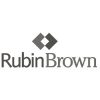How should we evaluate a CEO’s performance? Or the performance of any organizational leader? Too often, leadership evaluations — especially CEO evaluations — are based on the previous year’s financial achievements or disappointments. But those can only show us what happened in the past. But what most organizations really want is a tool that can measure past performance and use it to predict a leader’s performance going forward.
A good evaluation should be part of an overall program that clarifies the organization’s direction, provides momentum, and develops future leaders. Having done many kinds of evaluations and leadership assessments over the decades, we’ve found that the most successful CEO evaluations, and leader evaluations in general, share four basic elements.
1. An Effective Leadership Evaluation Structure
To gather a complete picture, this should include pre-planning; feedback surveys; data analysis; a series of interim meetings to clarify and communicate results; and finally, the formal evaluation meeting (with the board, if evaluating a CEO). Before the final meeting, the performance critique has been completed; areas of agreement and disagreement have been identified; and the leader has developed an action plan to address questions regarding both organizational performance and personal development.
2. Objective Information From Multiple Data Sources
Decisions with such sweeping influence on an organization should not be based on information gleaned solely from in-house financial figures, the executive’s self-evaluation, or other internally generated statistics. The lifeblood of a truly effective evaluation process consists of objective and reliable data, best supplied by an outside specialist. This data should come from multiple sources, including 360° degree surveys, background data, and formal assessment.
3. Frank and Open Communication
To be of greatest value to the organization, the evaluation process should be a collaborative, consensus-building experience. So, the goal of the evaluation specialist is to encourage frank and open communication with all participants, creating a positive communication climate.
4. Dialogue About Expectations
This is an all-too-often overlooked aspect of leadership evaluation. But consider: The objective of an evaluation is not merely to measure the leader’s performance, or set target numbers for next year’s performance. An effective evaluation process introduces a dialogue about the organization’s short-term goals and long-term direction, forging a genuine working partnership between the board and the CEO (in the case of CEO evaluation) or between the C-suite and leader (for other positions).
Structuring any sort of leadership evaluation can be difficult; creating one that meets these four criteria requires additional expertise and experience. If you would like a more in-depth look at our own CEO evaluation process, we recommend our article “The CEO Evaluation: Making CEOs the Best They Can Be.”













